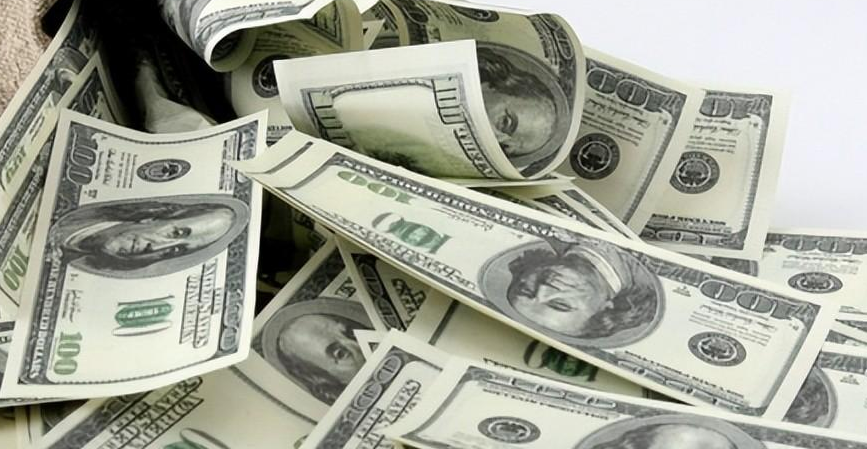US Debt Interest Bill to Surpass $1.3 Trillion in 2024
Advertisements
The economic landscape of the United States is currently under a microscope, particularly concerning its overwhelming national debt—a topic that many Americans may find perplexing. As we delve into understanding the implications of recent economic policies and impending financial decisions, one might be surprised by the sheer complexity of the situation involving the debt ceiling and interest rates.
To set the stage, let's revisit the debt ceiling which was officially hit on the day Donald Trump was sworn in as President. This legislative cap on the amount of money the federal government can borrow has far-reaching consequences. Notably, it determines how the Treasury manages its debt, which includes critical government spending programs and the financing of public services. As of now, the total debt of the United States is poised to remain unchanged for the next several months. The Treasury possesses a cash reserve, currently estimated at $670 billion, which is expected to dwindle to zero in the face of mounting obligations.
This financial maneuvering may seem like a temporary stop-gap, but analysts from popular financial blogs, such as ZeroHedge, argue that this is merely the surface of a deeper issue. As summer approaches, specifically around July, when the debt ceiling is anticipated to be raised, the nation’s debt could unexpectedly spike by nearly $2 trillion. This jarring increase would align the debt with levels that would have naturally occurred had the ceiling not been imposed.
As one scrutinizes the U.S. debt trajectory, the rising expense associated with interest payments emerges as a significant factor. The question of how much interest payments could surge looms large over U.S. finances. Deutsche Bank's interest rate strategist, Steven Zeng, has provided insights that underscore a grim forecast: as the proportion of U.S. debt grows, so too will the interest expenses associated with it. This is neither a shocking nor a novel revelation, particularly given the unpredictable nature of economic cycles.
Focusing on short-term debt presents a mixed bag of outcomes. According to Zeng, refinancing short-term obligations, such as Treasury bills and floating-rate notes, could become cheaper. This cost savings hinges on the Federal Reserve's anticipated interest rate cuts, projected to lower borrowing costs significantly. Yet, despite this encouraging note, it is overshadowed by a concerning fact: while short-term debt might offer temporary financial relief, the expectation of an additional $500 billion in short-term Treasury supply will exacerbate interest expenses by about $25 billion.
The situation becomes even more critical when considering the long-term debt landscape. With rising interest rates and more stringent economic policies, the refinancing costs for long-term debt are projected to rise steeply—an alarming increase of $68 billion compared to last year. This escalation in spending can largely be attributed to growing yield premiums demanded by investors wary of long-term securities amidst economic uncertainty. As the term premium spikes, the cost of issuing long-term bonds rises, leading to significant financial burdens on future appropriations.

Moreover, the projected increase of $1.6 trillion in medium- and long-term Treasury issuances adds another layer to the financial conundrum, expected to add approximately $52 billion in interest expenses. When aggregated, these factors suggest that this year's interest expenses could rise by a staggering $111 billion, based on assumptions regarding interest rates and Treasury issuance that align with existing trends. However, economic realities can often diverge from projections, leading to substantial uncertainties.
The total interest expenditure is already staggering, reaching an alarming $1.2 trillion, and projections indicate it may soon surge past $1.3 trillion. Such figures evoke urgent conversations about the sustainability of U.S. debt levels and the structural challenges facing the nation.
Looking ahead, while the long-term forecast may be concerning, short-term strategies from the U.S. Treasury are expected to remain consistent. The incoming Secretary of the Treasury, Scott Bessent, articulated his commitment to deficit reduction during his confirmation hearing, emphasizing the need for careful budgeting and economic prudence. Such a “pragmatic” approach may imply a reluctance to diverge from status quo financial strategies.
In today’s prevailing interest rate environment, maintaining a higher ratio of short-term Treasuries could prove wise. As long-term bonds suffer depreciation in a rising interest rate scenario, short-term options provide a flexible mechanism to manage fiscal risk and respond to economic fluctuations. Hence, for many analysts, a pragmatic adherence to short-term bonds is not only a defensive play but a calculated adaptation to current market conditions.
In conclusion, as the U.S. navigates the intricate web of its national debt, grappling with the realities of rising interest costs and imminent fiscal actions, one key takeaway emerges: while the immediate future may seem to offer temporary reprieve, the broader implications of this financial strategy demand vigilant scrutiny. Financial stability relies on deliberated decision-making, and as such, any shifts in the economic title could usher in turbulent waters that affect millions, both domestically and internationally. How the Treasury responds and adapts will undoubtedly play a crucial role in shaping the nation’s financial future.
Leave a Reply
Your email address will not be published. Required fields are marked *